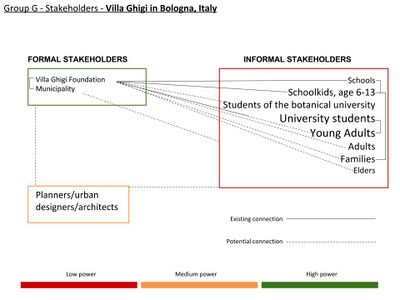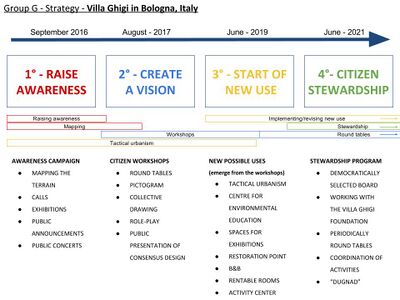LED 2016 Group G Democratic Change Process: Difference between revisions
| Line 31: | Line 31: | ||
However, the model also has some limitations. The financial issues have not been settled and there are some gaps in the model as to who will organize concerts, events and roundtables to start with. The model is also highly dependent on private individuals with a heart for the cause. In addition, one could argue that this model is too limited to this case and therefore not fit to be adapted to other areas or case studies. | However, the model also has some limitations. The financial issues have not been settled and there are some gaps in the model as to who will organize concerts, events and roundtables to start with. The model is also highly dependent on private individuals with a heart for the cause. In addition, one could argue that this model is too limited to this case and therefore not fit to be adapted to other areas or case studies. | ||
Latest revision as of 18:53, 11 July 2016
The Villa Ghigi building in Bologna is still representing a missed occasion. This house is located in the homonymous park and dating back to the IXX century, though the first establishment is in the XVI century, but it is now abandoned. The Park of Villa Ghigi has a very high naturalistic value: it is located on the hills at the south Bologna, it is really close to the city center though it has not the features of an urban park. In fact presents a “rural” arrangement, with rows of fruit trees, and has strong differences of levels. The past proprietaries Callisto Ghigi and his son Alessandro brought a lot of exotic species of plants, even from Asia, making the park a sort of oasis for the biodiversity. Today the ownership is of the common, the park and the villa managed by a founding called Fondazione Villa Ghigi that promotes pedagogical activities with the schools and walks in the park.
Although the park is very popular, there is an under-utilization of the architectural work: the “villa”, the “caretaker’s house”, the “palazzino” where the Fondazione Villa Ghigi is established. There is a project to make the caretaker’s house a small refreshment point, but it is a pity that the a building as important as the villa will remain empty in state of decay. The main problem, as always, is the lack of money, some years ago the common banned an auction but it went deserted. The building need a restoration. The challenge in this case is to raise awareness on what that place could be; is necessary that people knew that the place is resource for the community. People often do not think that abandoned places are their properties and also opportunities, but they only accept the situation as it is.
The core concept for this case of study is the new appropriation (not a re-appropriation because the villa has never been public) of a place that could be a great resource for the city and for the community. It needs to create a vision. Imagine new activities and new usage modes. The city of Bologna is not dead from this point of view: you can count some episodes where association won public calls for the regeneration of unproductive sites. Starting from the strong features: the park is popular, close to the center, very rich of plants, pedagogical programs that could be empower, you may involve citizenship, particularly the kids from the school, or member the association engaged in protection of the environment and biodiversity, to start visioning meeting to imagine the future of the park.
Power Map
The main challenge for The Villa Ghigi and the park is that there are a lot of users who don't have any real power over the landscape. As shown in the power map, the power lies with the municipality and the Villa Ghigi Foundation, while the stakeholders that use the area a lot (represented by the size of the writing where larger is most use and smaller is less use) have low power.
- Power Map, needs and interests
Change Process
- Change Process
Concluding reflections
The change model we have created is mainly based on the theory of stewardship, as explained by Hester, as a reciprocal way of bringing new life to forgotten spaces.
The change model seeks to bring power to different user groups and lessen the municipal and “aristocratic” power structure that has ruled this site for a long time, thus making it more likely to reconnect the inhabitants of Bologna with the nature through Villa Ghigi and the surrounding park. This change model also has the potential of bringing several different user groups together and to create a bridge between formal and informal stakeholders. Moreover, the model creates the potential of local stewardship and a possibility to create a lasting place identity and sense of belonging.
However, the model also has some limitations. The financial issues have not been settled and there are some gaps in the model as to who will organize concerts, events and roundtables to start with. The model is also highly dependent on private individuals with a heart for the cause. In addition, one could argue that this model is too limited to this case and therefore not fit to be adapted to other areas or case studies.


